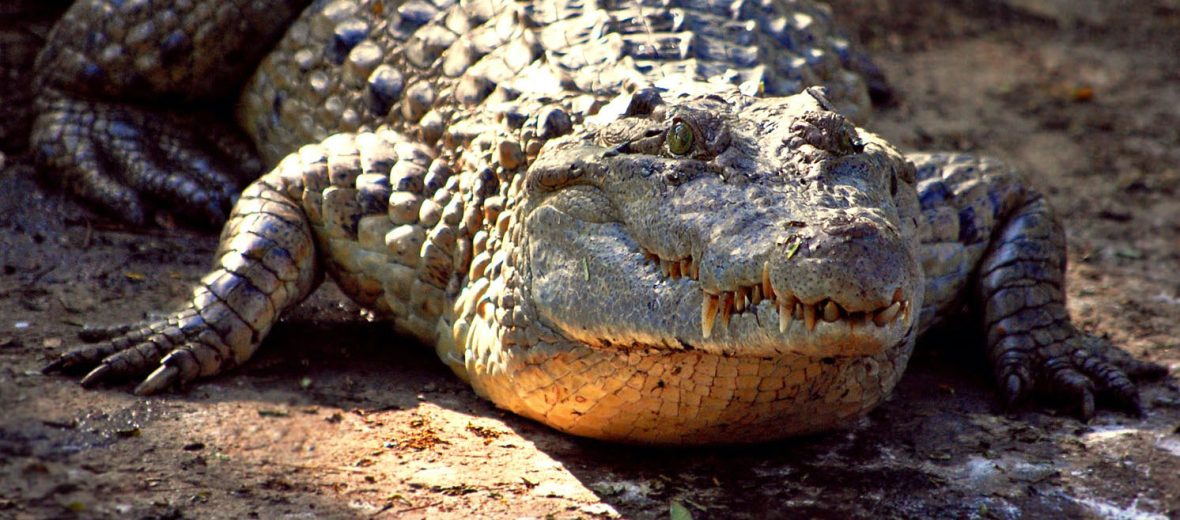
The Philippine crocodile, aka bukarot, buwaya, Mindoro crocodile, or Philippine freshwater crocodile, hails only from the Philippine islands. These cool crocodilians prefer freshwater marshes, ponds, and small rivers. Sadly, these crocs face the threats of habitat loss at the hands of agriculture, residential, and commercial developments; and overfishing (which depletes their food source). There were only an estimated 137 wild individuals remaining as of October, 2021. The IUCN lists these reptiles as not only Critically Endangered, but Critically Depleted. This means that their chances of going extinct are extremely high, since they are at risk of inbreeding with such a low population, coupled with being hunted. Their numbers are also decreasing.
First the Stats…
Scientific name: Crocodylus mindorensis
Weight: Up to 200+ lbs.
Length: Up to 10+ feet
Lifespan: Up to 80 years
Now on to the Facts!
1.) A group of crocodiles is called a float, nest, bask, or congregation.
2.) They prey on fish, crabs, shrimp, snails, amphibians, lizards, snakes, small mammals, and birds.
3.) In order to control their buoyancy, these crocs will eat larger stones in order to be able to sink in the water. Otherwise, they float.
4.) While basking in the sun, they sometimes begin to overheat, so they will often gape (open their mouth) to release heat and cool down.
5.) Unfortunately, the much larger saltwater crocodile dwells in the same general area as the Philippine crocodile. This results in the much smaller Philippine crocs being killed out of revenge or fear of attacks on humans.
But wait, there’s more on the Philippine crocodile!
6.) Philippine crocs are polygynous (1 male mates with multiple females).
7.) A nesting mound is built from mud, sticks, and leaves.
Did you know…?
These crocs were first discovered by Karl Schmidt in 1935, on Mindoro Island.
8.) Females are gravid for up to 5 months before laying eggs.
9.) The female will lay a clutch of eggs totaling up to 33. Both the male and females will guard the eggs till they hatch, then they will guard the hatchlings for a short time afterwards.
10.) Eggs hatch in up to 85 days.
But wait, there’s still more on the Philippine crocodile!
11.) Until Schmidt described these crocs as their own species, they were misidentified as a subspecies of the New Guinea crocodile.
12.) These crocs are small and don’t pose a threat to humans unless threatened or cornered.
13.) Crocodiles have been around for approximately 240 million years. They used to be small though and moved about on their 2 hind limbs. To this day, crocs have larger hind limbs than forelimbs.
14.) In 2001 the Philippine government made it illegal to hunt and/or kill these crocs. If caught, the fine is up to $2,500.
Now a Short Philippine Crocodile Video!
Be sure to share & comment below! Also, check out the Critter Science YouTube channel. Videos added regularly!
Want to suggest a critter for me to write about? Let me know here.
Photo credit: Gregg Yan



